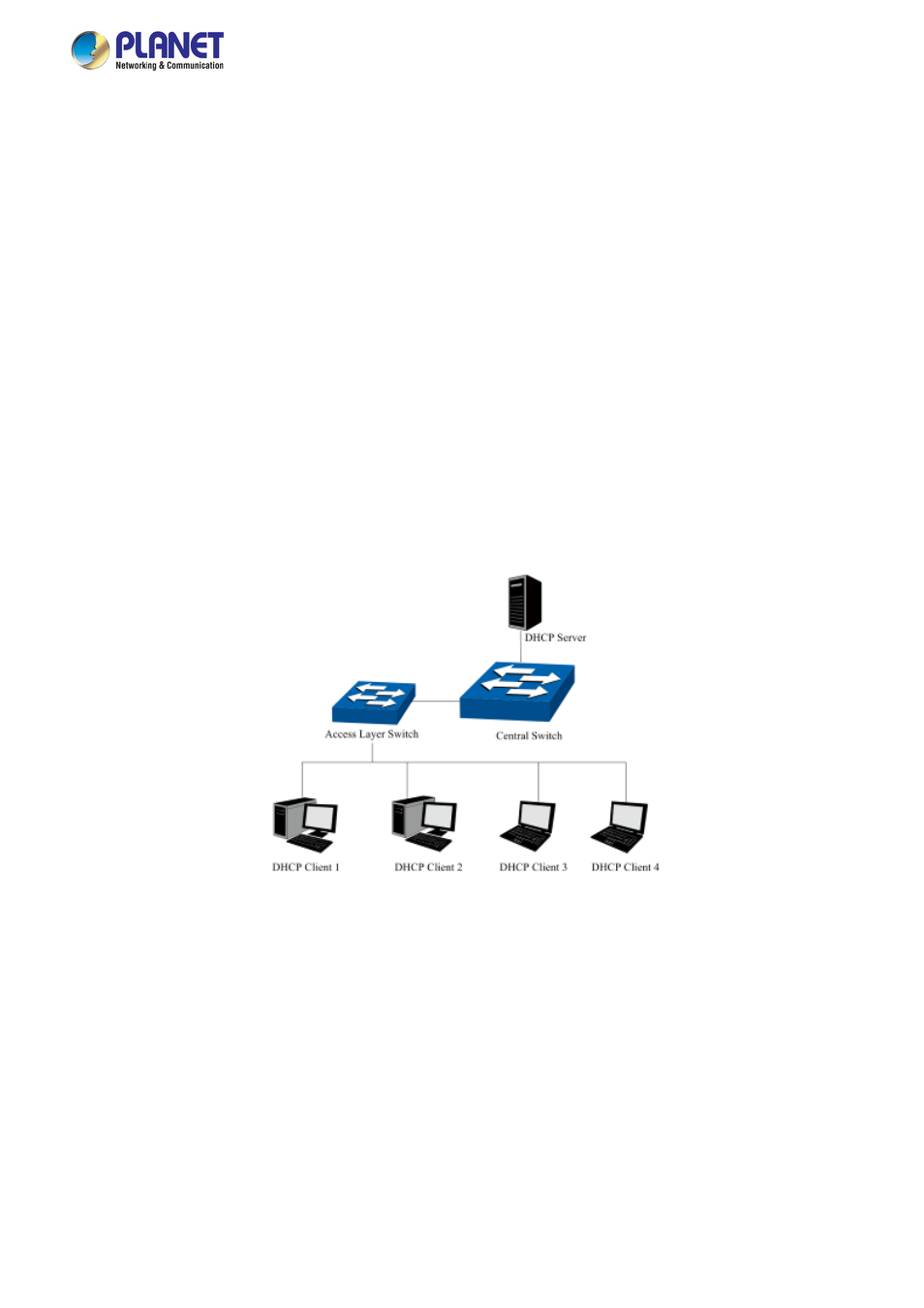5 dhcp filtering – PLANET FGSW-2840 User Manual
Page 94

User’s Manual of FGSW-2840 / FGSW-4840S
4.3.5 DHCP Filtering
Nowadays, the network is getting larger and more complicated. The amount of the PCs always exceeds that of the assigned IP
addresses. The wireless network and the laptops are widely used and the locations of the PCs are always changed. Therefore,
the corresponding IP address of the PC should be updated with a few configurations. DHCP (Dynamic Host Configuration
Protocol) functions are to solve the above mentioned problems.
However, during the working process of DHCP, generally there is no authentication mechanism between Server and Client. If
there are several DHCP servers in the network, network confusion and security problem will happen. To protect the Managed
Switch from being attacked by illegal DHCP servers, configure the desired ports as trusted ports and only the clients connected
to the trusted ports can receive DHCP packets from DHCP severs. Here the DHCP Filtering function performs to monitor the
process of hosts obtaining IP addresses from DHCP servers.
DHCP Working Principle
DHCP works via the “Client/Server” communication mode. The Client applies to the Server for configuration. The Server
assigns the configuration information, such as the IP address, to the Client, so as to reach a dynamic employ of the network
source. A Server can assign IP address to several Clients, which is illustrated in the following figure.
Figure 4-3-21:
Network Diagram of DHCP
For different DHCP clients, DHCP server provides three IP address assigning methods:
(1)
Manually assign the IP address: Allows the administrator to bind the static IP address to a specific client (e.g., WWW
Server) via the DHCP server.
(2)
Automatically assign the IP address: DHCP server assigns the IP address without an expiry time limitation to the
clients.
(3)
Dynamically assign the IP address: DHCP server assigns the IP address with an expiry time. When the time for the IP
address expired, the client should apply for a new one.
Most clients obtain IP addresses dynamically, which is illustrated in the following figure.
94
